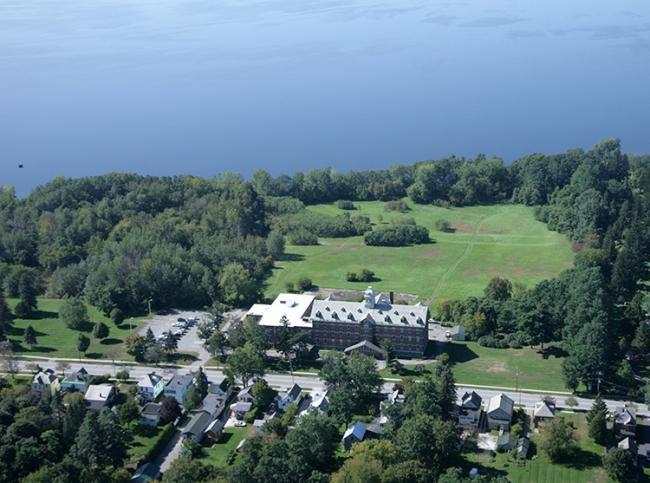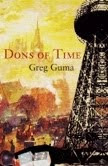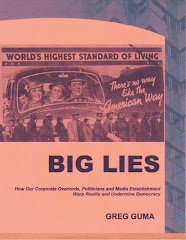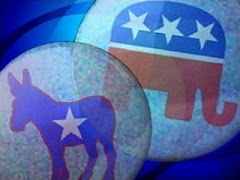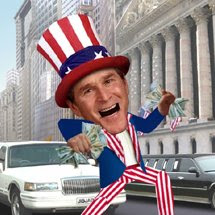Although television had been around for decades, sets weren’t widely available until after World War II. At that point at least 70 new stations immediately went on the air. But the Federal Communications Commission quickly realized that the 11 available TV channels on the VHF band wouldn’t meet the expected demand and therefore put a four year freeze on new station licenses until it could sort things out. As a result, TV remained an infant medium until the FCC authorized dozens of ultra-high frequency (UHF) channels and lifted the freeze in 1952.
By then, 15 million TV sets were in use and manufacturers were rushing to get more inexpensive models into as many private homes as possible.
The impacts were rapid, widespread and profound, breaking down social barriers, giving children an early glimpse of the adult world, demystifying relations between the sexes, and changing entertainment habits. But TV also posed a serious economic threat to radio and put hundreds of movie theaters out of business.
Combining visuals and sound, it was a highly effective way to shape public opinion with persuasive messages, misleading images, and outright propaganda. One person who exploited this potential early was Richard Nixon, by 1952 an ambitious and opportunistic anti-communist Senator embroiled in a fund-raising scandal after receiving the Republican nomination for Vice-President.
The GOP’s standard bearer, General Dwight Eisenhower, demanded that the political striver later known as Tricky Dick offer a public explanation over TV. He had been assured by his advisors that Nixon wouldn’t garner much support through such an appeal. But Nixon’s September 23 chat with the American people instead worked to his advantage, giving him an opportunity to reshape his persona and communicate his values.
Taking a page from radio evangelist Father Coughlin (see “When Radio Mattered”), Nixon was one of the first people to make political use of television to appeal directly to the public. Accused of accepting $18,000 in illegal campaign contributions, he gave a live address to the nation in which he revealed the results of an independent audit, provided a financial rundown of his assets and debts, openly solicited support, and cleverly protested that his wife wore a "respectable Republican cloth coat" rather than a fur. The one contribution he did acknowledge came from a Texas traveling salesman who gave his family a Cocker Spaniel. His daughter named the dog Checkers.
"The kids, like all kids, love the dog,” Nixon announced defiantly, “and I just want to say this right now, that regardless of what they say about it, we're gonna keep it." Simulcast on radio, the speech was a huge success, and Nixon, whom many expected to be dropped from the ticket, gained enough sympathy to remain Eisenhower’s running mate and ride the war hero’s coattails into the White House.
Under harsh TV lights, in black and white, his wife sitting uncomfortably in the background, Nixon projected the image of a hard-working, responsible and efficient realist, unafraid of opposition -- in fact, reconciled to it -- aggressive and clear-headed. At the very least he came across as committed, though the exact nature of the commitment was unclear. The style was self-important, even awkward. But it worked. He looked and sounded like a “man of the people,” an average guy, a believer in hard work and homespun values.
Nixon instinctively understood that television is a showcase for values, which are even more important than the content itself. He knew that more than ideas or facts, how things appeared determined the support one could generate through mass media, especially television. It was basic advertising logic; making the sale depended on the product’s attractiveness, enhanced by the seller’s ability to sustain attention, build rapport and promote interest.
As a sales pitch, Nixon’s “Checkers” speech offered viewers a sincere and slightly offended candidate, an average middle class family man valiantly holding up under the stress of attacks by mean-spirited forces, someone the viewers could trust or perhaps even admire. Nixon made the sale that night and became one of the first public figures to reinvent himself through the new medium.
***
I was five at the time of Nixon’s first rehabilitation – remarkably, he managed the feat several more times during his tumultuous public life, plus once after his death -- and watched “Checkers” with my parents. They were loyal Republicans who collected “I like Ike” buttons, volunteered for local candidates, and warmly embraced the American Dream. Words like pacifism weren’t in their vocabulary, and the notion that something might be amiss with capitalism and the prevailing political system never came up. Despite any setbacks – the wartime draft that delayed dad’s legal career by five years, for instance, or the gangster-dominated textile unions that made things tough for my grandfather, who was part-owner of a clothing factory – as far as my folks were concerned the system worked well enough.
At that point I wasn’t paying much attention to politics. Nixon was just some guy on the tube, marginally interesting simply because he was there, somewhat sympathetic because he sounded so earnest, and yet, in the end, considerably less riveting than the average animal act on Ed Sullivan’s weekly revue. As a child of the emerging electronic age, what really grabbed me was TV’s seemingly endless supply of fantasies and personalities – Ernie Kovaks’ weird visual tricks and Jackie Gleason’s oversized hamming, Milton Berle’s egotistical swagger, the overdressed cowboy virtue of Hopalong Cassidy and outlandish mishaps of Lucy and Desi, Jack Webb’s “just the facts” deadpan, and Howdy Doody’s freckle-faced puppet enthusiasm. When the Lone Ranger and Tonto brought simple justice to TV’s squeaky clean Old West, I’d strap on my miniature gun belt and ride along.
One of the first shows that made an impression was called Winky Dink and You, a combination of animation and live action that may have been the first attempt at interactive video. To get involved, your parents had to buy a "Magic Screen" – AKA sheet of sticky acetate -- and a set of crayons from the producers. At several points in each episode, narrator Jack Barry would explain that Winky, a cartoon hero with a star-shaped head, needed help to get out of some fix. If you had the equipment, you could solve his problem by drawing a few lines.
The show was a clever innovation by Barry and Dan Enright, who had been partners on radio and made an early jump to TV. Later, the duo would produce quiz shows classics like Tic Tac Dough, Concentration and Twenty One, the latter leading to a media scandal when it was discovered that some contestants got the questions in advance.
Years earlier, Barry and Enright had come up with a hit kids radio show called Juvenile Jury, originally aired on WOR radio in New York. Once Mutual Broadcasting took it national in 1946, Juvenile Jury became the first commercially sponsored network series and later, on NBC, one of the first programs to make the transition to TV.
The premise was disarmingly simple: Barry, a quick-witted bachelor with an easy smile, would question and spar with a panel of five kids on topics submitted by the studio audience, selected viewers, or, on the TV version, other kids who described their “problems” in person. In that innocent time, questions like “should an eleven-year-old girl wear lipstick” or “who should administer a spanking, mom or dad” made for perfect family viewing. Putting the youngsters at ease before the broadcast, Barry could provoke spontaneous, often funny reactions.
In 1953, around the time that philosopher Alan Watts was beginning a sophisticated, philosophical talk show on KPFA in Berkeley, recruiters for the unabashedly lowbrow Juvenile Jury came to my elementary school in New York City looking for kids who were comfortable in public and had practical, easy-to-solve “problems.” A few weeks later I made my television debut.
As Barry introduced the five young jurists, each sitting behind a microphone-equipped tape dispenser (CIA take note), I waited nervously in the wings. It was one thing to talk about myself in private, and quite another to do it in front of an audience and cameras on live TV. But my desire for attention trumped my fears. I was six years old and ready for my close up.
After introducing the jury, five “adorable” children between four and ten years old, and a brief pitch by the Scotch girl, a perky blonde holding a tape dispenser and wearing a plaid kilt, Barry got down to business. First, he fielded a question from a member of the home audience. The answers were less important than the comic possibilities provided by kids trying to sound like adults.
Barry had hosted the show for more than six years by this time and knew how to maintain the right tone, letting each kid have a say, conducting relaxed discussions, accepting their suggestions with mock seriousness, and summing up with a wholesome lesson. Most of the time, the jury’s verdict was some variation on themes like “be yourself” or “wait a while.”
Next, he explained that a regular feature of the show was to “let our younger listeners present their problems in person.” This was my cue. As Barry announced my name, I stepped out through the huge tape dispenser into glaring studio light and took my place on the witness stand. It was like Alice going through the looking glass. I was no longer just passively watching what happened on the other side but actually becoming part of an alternative, electronic world.
During the audition, I’d presented a simple problem. I am an excellent golfer, I complained, but my father won’t let me play with him on the adult course. At six, of course, my expertise was limited to the putt-putt variety, but that’s what made it funny. To enhance the comic possibilities, the producers decided to have me appear with a pint-sized golf bag and clubs slung across my shoulder. The plan was that Barry would ask me to demonstrate my swing.
So, there I was on live TV, talking with someone famous whom I’d been watching and hearing for years, amusing the studio audience and magically connecting with thousands of people in their homes across the country. It was like a drug that made you instantly high and incredibly self-confident. At that moment, an obsession with mass communication took hold.
When the cue came, I pulled out a club and took my stance, oblivious to the lights and cameras, completely into the experience. Up to that point it felt like a public audition to enter dad’s adult world. But the show was really about comedy, kids saying and doing amusing things, a primitive form of reality TV, and it was my turn to do the amusing.
I took a swing and almost whacked Jack Barry.
The audience roared. Seeing the dapper MC almost get his head used as a golf ball by a kid was apparently even funnier than the usual “mouths of babes” platitudes. Once again, live TV had delivered something spontaneous – and borderline dangerous. For an instant I was worried. After all, I’d almost beaned the master of ceremonies. But it quickly became obvious that the audience reaction was positive, and Jack wasn’t too upset, so I relaxed and enjoyed the attention. Completely by accident I’d turned my simple demonstration into a moment of physical comedy.
I’d missed the host but hit the target and my life would never be the same.
NEXT: Managing Pacifica - How the Journey Began
To table of contents: Planet Pacifica
